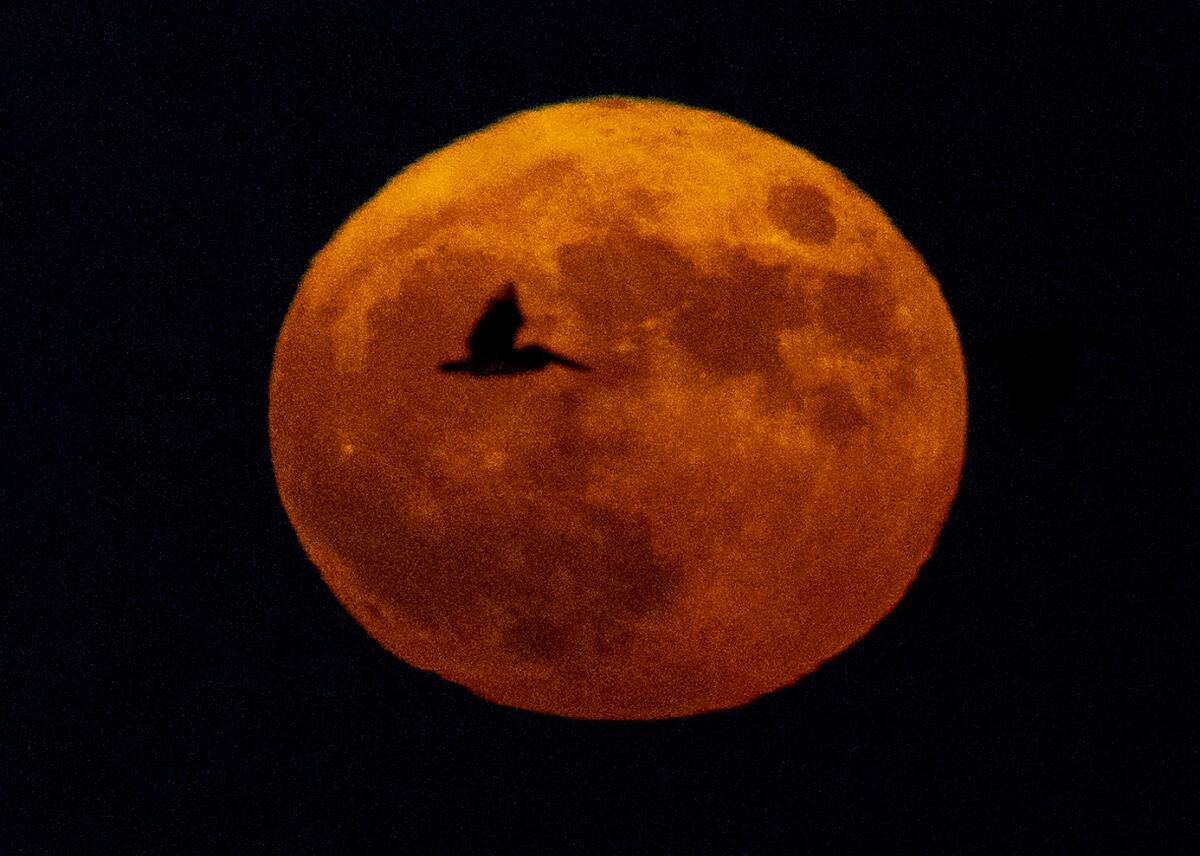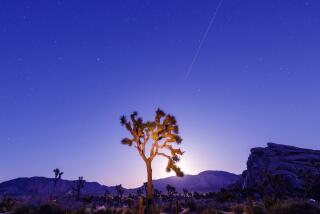A big, gleaming ‘super blue moon’ will rise Wednesday night. Here’s how to see it

What’s rarer than a blue moon? A super blue moon!
The astronomical phenomenon, in which the second full moon of the calendar month reaches its full moon phase at its closest point to Earth, is set to arrive Wednesday night.
According to NASA, a blue moon is when there is more than one full moon in a month or more than three full moons in a season. They occur roughly every two to three years.
The supermoon, meanwhile, is when the moon’s full phase occurs when it reaches the perigee of its orbit, or the shortest distance between the moon and Earth. The proximity means the moon appears about 14% larger than it does during the apogee, when it is farthest from Earth.
The people who designed rovers to explore Mars are developing a slithering robot to search for signs of life in watery environments, such as the moon Enceladus.
NASA reports that about a quarter of full moons qualify as “supermoons,” but only 3% of full moons are blue moons. There can be a gap of as many as 20 years between occurrences of super blue moons, and the next super blue moon after Wednesday’s is not expected until 2037.
An optimal time to view a full moon is just after sunset when it is on the horizon and takes on a deep orange color, astronomer Tom Kerss told Forbes. The super blue moon should be at its brightest for West Coast viewers at 7:36 p.m. Pacific time. The planet Saturn will also be visible near the moon, to the upper right, before appearing to move clockwise around it.
NASA has more tips on how to view the super blue moon.








